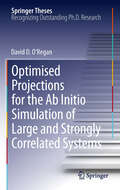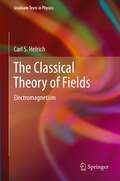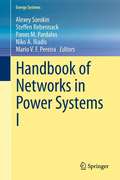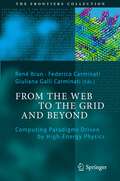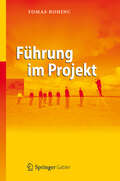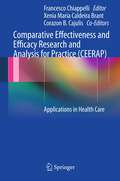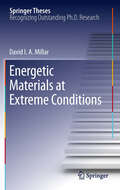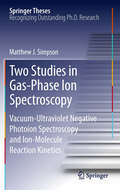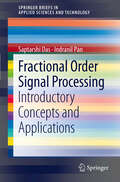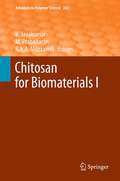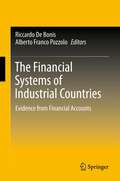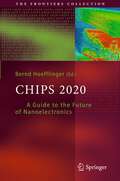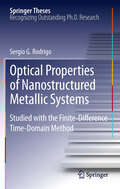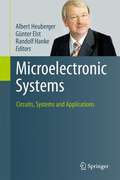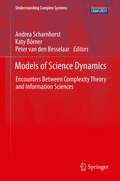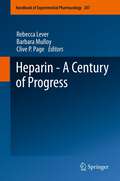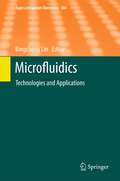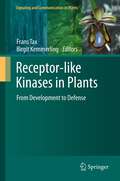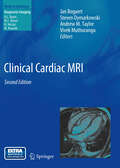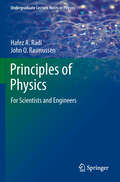- Table View
- List View
Optimised Projections for the Ab Initio Simulation of Large and Strongly Correlated Systems
by David D. O'ReganDensity functional theory (DFT) has become the standard workhorse for quantum mechanical simulations as it offers a good compromise between accuracy and computational cost. However, there are many important systems for which DFT performs very poorly, most notably strongly-correlated materials, resulting in a significant recent growth in interest in 'beyond DFT' methods. The widely used DFT+U technique, in particular, involves the addition of explicit Coulomb repulsion terms to reproduce the physics of spatially-localised electronic subspaces. The magnitude of these corrective terms, measured by the famous Hubbard U parameter, has received much attention but less so for the projections used to delineate these subspaces. The dependence on the choice of these projections is studied in detail here and a method to overcome this ambiguity in DFT+U, by self-consistently determining the projections, is introduced. The author shows how nonorthogonal representations for electronic states may be used to construct these projections and, furthermore, how DFT+U may be implemented with a linearly increasing cost with respect to system size. The use of nonorthogonal functions in the context of electronic structure calculations is extensively discussed and clarified, with new interpretations and results, and, on this topic, this work may serve as a reference for future workers in the field.
The Classical Theory of Fields
by Carl S. HelrichThe study of classical electromagnetic fields is an adventure. The theory is complete mathematically and we are able to present it as an example of classical Newtonian experimental and mathematical philosophy. There is a set of foundational experiments, on which most of the theory is constructed. And then there is the bold theoretical proposal of a field-field interaction from James Clerk Maxwell. This textbook presents the theory of classical fields as a mathematical structure based solidly on laboratory experiments. Here the student is introduced to the beauty of classical field theory as a gem of theoretical physics. To keep the discussion fluid, the history is placed in a beginning chapter and some of the mathematical proofs in the appendices. Chapters on Green's Functions and Laplace's Equation and a discussion of Faraday's Experiment further deepen the understanding. The chapter on Einstein's relativity is an integral necessity to the text. Finally, chapters on particle motion and waves in a dispersive medium complete the picture. High quality diagrams and detailed end-of-chapter questions enhance the learning experience.
Handbook of Networks in Power Systems II
by Panos M. Pardalos Alexey Sorokin Niko A. Iliadis Mario V. Pereira Steffen RebennackEnergy has been an inevitable component of human lives for decades. Recent rapid developments in the area require analyzing energy systems not as independent components but rather as connected interdependent networks. The Handbook of Networks in Power Systems includes the state-of-the-art developments that occurred in the power systems networks, in particular gas, electricity, liquid fuels, freight networks, as well as their interactions. The book is separated into two volumes with three sections, where one scientific paper or more are included to cover most important areas of networks in power systems. The first volume covers topics arising in electricity network, in particular electricity markets, smart grid, network expansion, as well as risk management. The second volume presents problems arising in gas networks; such as scheduling and planning of natural gas systems, pricing, as well as optimal location of gas supply units. In addition, the second volume covers the topics of interactions between energy networks. Each subject is identified following the activity on the domain and the recognition of each subject as an area of research. The scientific papers are authored by world specialists on the domain and present either state-of-the-arts reviews or scientific developments.
Handbook of Networks in Power Systems I (Energy Systems)
by Panos M. Pardalos Alexey Sorokin Niko A. Iliadis Steffen Rebennack Mario V. F. PereiraEnergy has been an inevitable component of human lives for decades. Recent rapid developments in the area require analyzing energy systems not as independent components but rather as connected interdependent networks. The Handbook of Networks in Power Systems includes the state-of-the-art developments that occurred in the power systems networks, in particular gas, electricity, liquid fuels, freight networks, as well as their interactions. The book is separated into two volumes with three sections, where one scientific paper or more are included to cover most important areas of networks in power systems. The first volume covers topics arising in electricity network, in particular electricity markets, smart grid, network expansion, as well as risk management. The second volume presents problems arising in gas networks; such as scheduling and planning of natural gas systems, pricing, as well as optimal location of gas supply units. In addition, the second volume covers the topics of interactions between energy networks. Each subject is identified following the activity on the domain and the recognition of each subject as an area of research. The scientific papers are authored by world specialists on the domain and present either state-of-the-arts reviews or scientific developments.
From the Web to the Grid and Beyond
by René Brun Giuliana Galli Carminati Federico CarminatiBorn after World War II, large-scale experimental high-energy physics (HEP) has found itself limited ever since by available accelerator, detector and computing technologies. Accordingly, HEP has made significant contributions to the development of these fields, more often than not driving their innovations. The invention of the World Wide Web at CERN is merely the best-known example out of many. This book is the first comprehensive account to trace the history of this pioneering spirit in the field of computing technologies. It covers everything up to and including the present-day handling of the huge demands imposed upon grid and distributed computing by full-scale LHC operations--operations which have for years involved many thousands of collaborating members worldwide and accordingly provide the original and natural testbed for grid computing concepts. This book takes the reader on a guided tour encompassing all relevant topics, including programming languages, software engineering, large databases, the Web, and grid- and cloud computing. The important issue of intellectual property regulations for distributed software engineering and computing is also addressed. Aptly, the book closes with a visionary chapter of what may lie ahead. Approachable and requiring only basic understanding of physics and computer sciences, this book is intended for both education and research.
Führung im Projekt
by Tomas BohincProjektleiter übernehmen tagtäglich Führungsaufgaben. Wie Studien zeigen, scheitern Projekte aber immer wieder daran, dass Führungsverantwortung nicht oder nicht genügend wahrgenommen wird. In dem Buch dienen typische Führungssituationen als Ausgangspunkt, um die Führungsaufgaben eines Projektleiters zu beschreiben und zu demonstrieren, welche Führungsinstrumente in welcher Situation wirksam eingesetzt werden können. Mit Checklisten für die Praxis und einem speziellen Kapitel mit Hinweisen zum Führen virtueller Teams.
Comparative Effectiveness and Efficacy Research and Analysis for Practice (CEERAP): Applications in Health Care
by Francesco Chiappelli Xenia Maria Caldeira Brant Corazon B. CajulisRecent trends in health care across the United States and internationally have emphasized a novel approach that consists in comparing the effectiveness and efficacy of treatment interventions with a patient-centered emphasis (i.e., evidence-based health care), while ensuring cost constraints, maximizing benefits, and minimizing risks. In this book, experts in comparative effectiveness and efficacy research and analysis for practice (CEERAP) in health care in general address a range of topical issues. The emphasis is on implications for endodontics and nursing, both of which are considered in a series of detailed chapters. Commonalities and differences among CEERAP, utility-based and logic-based analysis and decision-making, and evidence-based and patient-centered practice are defined and discussed. The book concludes by examining applications for CEERAP in developing patient-centered optimal treatment interventions for the next decade.
Energetic Materials at Extreme Conditions
by David I.A. MillarDavid I.A. Millar's thesis explores the effects of extreme conditions on energetic materials. His study identifies and structurally characterises new polymorphs obtained at high pressures and/or temperatures. The performance of energetic materials (pyrotechnics, propellants and explosives) can depend on a number of factors including sensitivity to detonation, detonation velocity, and chemical and thermal stability. Polymorphism and solid-state phase transitions may therefore have significant consequences for the performance and safety of energetic materials. In order to model the behaviour of these important materials effectively under operational conditions it is essential to obtain detailed structural information at a range of temperatures and pressures.
Two Studies in Gas-Phase Ion Spectroscopy
by Matthew J. SimpsonIn this thesis Matthew Simpson reportstwo areas of work in gas ion spectroscopy, each investigation in itself worthy of a PhD. The first study uses tunable vacuum-ultraviolet radiation from a synchrotron to identify negative ions from twenty four photoexcited polyatomic molecules in the gas phase. From these experiments, Matthew collects a vast amount of data and summarises and reviews ion-pair formation from polyatomic molecules. The second study is on selected ion flow tube mass spectrometry. Matthew investigates the reactions of cations and anions with ethene, monofluoroethene, 1,1-difluoroethene and tetrafluoroethene. In this study Matthew tries to explain why certain products are formed preferentially over other products at a microscopic level of understanding. The data recorded in this thesis form the most comprehensive collection of information about anion formation and are the basis of a review and numerous articles in specialist journals.
Fractional Order Signal Processing
by Indranil Pan Saptarshi DasThe book tries to briefly introduce the diverse literatures in the field of fractional order signal processing which is becoming an emerging topic among an interdisciplinary community of researchers. This book is aimed at postgraduate and beginning level research scholars who would like to work in the field of Fractional Order Signal processing (FOSP). The readers should have preliminary knowledge about basic signal processing techniques. Prerequisite knowledge of fractional calculus is not essential and is exposited at relevant places in connection to the appropriate signal processing topics. Basic signal processing techniques like filtering, estimation, system identification, etc. in the light of fractional order calculus are presented along with relevant application areas. The readers can easily extend these concepts to varied disciplines like image or speech processing, pattern recognition, time series forecasting, financial data analysis and modeling, traffic modeling in communication channels, optics, biomedical signal processing, electrochemical applications and many more. Adequate references are provided in each category so that the researchers can delve deeper into each area and broaden their horizon of understanding. Available MATLAB tools to simulate FOSP theories are also introduced so that the readers can apply the theoretical concepts right-away and gain practical insight in the specific domain.
Chitosan for Biomaterials I (Advances in Polymer Science #243)
by Riccardo A. Muzzarelli M. Prabaharan R. JayakumarPolymeric Nanoparticles of Chitosan Derivatives as DNA and siRNA Carriers, by Y. K. Kim, H. L. Jiang, Y. J. Choi, I. K. Park, M. H. Cho and C. S. Cho.- Chitosan and Its Derivatives for Drug Delivery Perspective, by T. A. Sonia and C. P. Sharma.- Chitosan-based Nanoparticles in Cancer Therapy, by V.-K. Lakshmanan, K. S. Snima, J. D. Bumgardner, S. V. Nair, and R. Jayakumar.- Chitosan and Thiolated Chitosan, by F. Sarti and A. Bernkop-Schnürch.- Chitosan-Based Particulate Systems for Non-Invasive Vaccine Delivery, by S. Şenel.- Multifunctional Chitosan Nanoparticles for Tumor Imaging and Therapy, by J. Y. Yhee, Heebeom Koo, Dong Eun Lee, Kuiwon Choi, Ick Chan Kwon and Kwangmeyung Kim.- Chitosan-Coated Iron Oxide Nanoparticles for Molecular Imaging and Drug Delivery, by H. Arami, Z. Stephen, O. Veiseh and M. Zhang.- Chitosan: Its Applications in Drug-Eluting Devices, by Mei -Chin Chen, Fwu -Long Mi, Zi -Xian Liao and Hsing -Wen Sung.-
The Financial Systems of Industrial Countries: Evidence from Financial Accounts
by Alberto Franco Pozzolo Riccardo De BonisThis book offers a comprehensive overview of the financial systems of major industrialized countries using the statistical framework of the financial accounts. After a discussion of how economists agreed to create a framework to monitor the financial linkages between surplus and deficit sectors, the book analyzes in detail the composition and the recent evolution of financial assets and liabilities for households (including public pension rights), firms and intermediaries. Next, the volume studies the convergence patterns of financial structures and their influence on the effectiveness of monetary policy within European countries. The final chapter unifies the previous pictures, showing how the effects of financial integration and global imbalances could have been foreseen based on the financial accounts. The analysis and information contained in the book will help the readers to understand many issues and challenges raised by the recent financial crisis.
Chips 2020: A Guide to the Future of Nanoelectronics (The Frontiers Collection)
by Bernd HoefflingerThe chips in present-day cell phones already contain billions of sub-100-nanometer transistors. By 2020, however, we will see systems-on-chips with trillions of 10-nanometer transistors. But this will be the end of the miniaturization, because yet smaller transistors, containing just a few control atoms, are subject to statistical fluctuations and thus no longer useful. We also need to worry about a potential energy crisis, because in less than five years from now, with current chip technology, the internet alone would consume the total global electrical power! This book presents a new, sustainable roadmap towards ultra-low-energy (femto-Joule), high-performance electronics. The focus is on the energy-efficiency of the various chip functions: sensing, processing, and communication, in a top-down spirit involving new architectures such as silicon brains, ultra-low-voltage circuits, energy harvesting, and 3D silicon technologies. Recognized world leaders from industry and from the research community share their views of this nanoelectronics future. They discuss, among other things, ubiquitous communication based on mobile companions, health and care supported by autonomous implants and by personal carebots, safe and efficient mobility assisted by co-pilots equipped with intelligent micro-electromechanical systems, and internet-based education for a billion people from kindergarden to retirement. This book should help and interest all those who will have to make decisions associated with future electronics: students, graduates, educators, and researchers, as well as managers, investors, and policy makers. Introduction: Towards Sustainable 2020 Nanoelectronics.- From Microelectronics to Nanoelectronics.- The Future of Eight Chip Technologies.- Analog-Digital Interfaces.- Interconnects and Transceivers.- Requirements and Markets for Nanoelectronics.- ITRS: The International Technology Roadmap for Semiconductors.- Nanolithography.- Power-Efficient Design Challenges.- Superprocessors and Supercomputers.- Towards Terabit Memories.- 3D Integration for Wireless Multimedia.- The Next-Generation Mobile User-Experience.- MEMS (Micro-Electro-Mechanical Systems) for Automotive and Consumer.- Vision Sensors and Cameras.- Digital Neural Networks for New Media.- Retinal Implants for Blind Patients.- Silicon Brains.- Energy Harvesting and Chip Autonomy.- The Energy Crisis.- The Extreme-Technology Industry.- Education and Research for the Age of Nanoelectronics.- 2020 World with Chips.
Optical Properties of Nanostructured Metallic Systems
by Sergio G. RodrigoThe common belief is that light is completely reflected by metals. In reality they also exhibit an amazing property that is not so widely known: under some conditions light flows along a metallic surface as if it were glued to it. Physical phenomena related to these light waves, which are called Surface Plasmon Polaritons (SPP), have given rise to the research field of plasmonics. This thesis explores four interesting topics within plasmonics: extraordinary optical transmission, negative refractive index metamaterials, plasmonic devices for controlling SPPs, and field enhancement phenomena near metal nanoparticles.
Microelectronic Systems
by Albert Heuberger Randolf Hanke Günter Elst Karlheinz Kirsch Janina HeppnerThis book is dedicated to Prof. Dr. Heinz Gerhäuser on the occasion of his retirement both from the position of Executive Director of the Fraunhofer Institute for Integrated Circuits IIS and from the Endowed Chair of Information Technologies with a Focus on Communication Electronics (LIKE) at the Friedrich-Alexander-Universität Erlangen-Nürnberg. Heinz Gerhäuser's vision and entrepreneurial spirit have made the Fraunhofer IIS one of the most successful and renowned German research institutions. He has been Director of the Fraunhofer IIS since 1993, and under his leadership it has grown to become the largest of Germany's 60 Fraunhofer Institutes, a position it retains to this day, currently employing over 730 staff. Likely his most important scientific as well as application-related contribution was his pivotal role in the development of the mp3 format, which would later become a worldwide success. The contributions to this Festschrift were written by both Fraunhofer IIS staff and external project team members in appreciation of Prof. Dr. Gerhäuser's lifetime academic achievements and his inspiring leadership at the Fraunhofer IIS. The papers reflect the broad spectrum of the institute's research activities and are grouped into sections on circuits, information systems, visual computing, and audio and multimedia. They provide academic and industrial researchers in fields like signal processing, sensor networks, microelectronics, and integrated circuits with an up-to-date overview of research results that have a huge potential for cutting-edge industrial applications.
Microelectronic Systems: Circuits, Systems and Applications
by Karlheinz Kirsch Janina HeppnerThis book is dedicated to Prof. Dr. Heinz Gerhäuser on the occasion of his retirement both from the position of Executive Director of the Fraunhofer Institute for Integrated Circuits IIS and from the Endowed Chair of Information Technologies with a Focus on Communication Electronics (LIKE) at the Friedrich-Alexander-Universität Erlangen-Nürnberg.Heinz Gerhäuser's vision and entrepreneurial spirit have made the Fraunhofer IIS one of the most successful and renowned German research institutions. He has been Director of the Fraunhofer IIS since 1993, and under his leadership it has grown to become the largest of Germany's 60 Fraunhofer Institutes, a position it retains to this day, currently employing over 730 staff. Likely his most important scientific as well as application-related contribution was his pivotal role in the development of the mp3 format, which would later become a worldwide success.The contributions to this Festschrift were written by both Fraunhofer IIS staff and external project team members in appreciation of Prof. Dr. Gerhäuser's lifetime academic achievements and his inspiring leadership at the Fraunhofer IIS. The papers reflect the broad spectrum of the institute's research activities and are grouped into sections on circuits, information systems, visual computing, and audio and multimedia. They provide academic and industrial researchers in fields like signal processing, sensor networks, microelectronics, and integrated circuits with an up-to-date overview of research results that have a huge potential for cutting-edge industrial applications.
Models of Science Dynamics
by Peter Van Besselaar Andrea Scharnhorst Katy BörnerModels of Science Dynamics aims to capture the structure and evolution of science, the emerging arena in which scholars, science and the communication of science become themselves the basic objects of research. In order to capture the essence of phenomena as diverse as the structure of co-authorship networks or the evolution of citation diffusion patterns, such models can be represented by conceptual models based on historical and ethnographic observations, mathematical descriptions of measurable phenomena, or computational algorithms. Despite its evident importance, the mathematical modeling of science still lacks a unifying framework and a comprehensive study of the topic. This volume fills this gap, reviewing and describing major threads in the mathematical modeling of science dynamics for a wider academic and professional audience. The model classes presented cover stochastic and statistical models, system-dynamics approaches, agent-based simulations, population-dynamics models, and complex-network models. The book comprises an introduction and a foundational chapter that defines and operationalizes terminology used in the study of science, as well as a review chapter that discusses the history of mathematical approaches to modeling science from an algorithmic-historiography perspective. It concludes with a survey of remaining challenges for future science models and their relevance for science and science policy.
Heparin - A Century of Progress
by Barbara Mulloy Rebecca Lever Clive P. PageHeparins remain amongst the most commonly used drugs in clinical practice. Almost 100 years have passed since the initial discovery of this complex substance and, during this time, understanding of the nature and uses of heparin and related molecules has grown dramatically. The aim of this volume is to summarise the developments that have led to the current status of both heparins as drugs and the field of heparin research, with a focus on the particularly rapid progress that has been made over the past three decades. Individual sections are dedicated to the nature of heparin as a biological molecule, the current approaches and techniques that are used to ensure the safety and reliability of heparin as a medicine, the clinical pharmacology of heparin as an anticoagulant drug, effects and potential applications of heparin aside of those involving haemostasis and, finally, the nature and potential uses of heparin-like materials from both natural and synthetic sources.
Microfluidics
by Bingcheng LinFlow Control Methods and Devices in Micrometer Scale Channels, by Shuichi Shoji and Kentaro Kawai. Micromixing Within Microfluidic Devices, by Lorenzo Capretto, Wei Cheng, Martyn Hill and Xunli Zhang. Basic Technologies for Droplet Microfluidics, by Shaojiang Zeng, Xin Liu, Hua Xie and Bingcheng Lin. Electrorheological Fluid and Its Applications in Microfluidics, by Limu Wang, Xiuqing Gong and Weijia Wen. Biosensors in Microfluidic Chips, by Jongmin Noh, Hee Chan Kim and Taek Dong Chung. A Nanomembrane-Based Nucleic Acid Sensing Platform for Portable Diagnostics, by Satyajyoti Senapati, Sagnik Basuray, Zdenek Slouka, Li-Jing Cheng and Hsueh-Chia Chang. Optical Detection Systems on Microfluidic Chips, by Hongwei Gai, Yongjun Li and Edward S. Yeung. Integrated Microfluidic Systems for DNA Analysis, by Samuel K. Njoroge, Hui-Wen Chen, Małgorzata A. Witek and Steven A. Soper. Integrated Multifunctional Microfluidics for Automated Proteome Analyses, by John K. Osiri, Hamed Shadpour, Małgorzata A. Witek and Steven A. Soper. Cells in Microfluidics, by Chi Zhang and Danny van Noort. Microfluidic Platform for the Study of Caenorhabditis elegans,by Weiwei Shi, Hui Wen, Bingcheng Lin and Jianhua Qin.
Secretions and Exudates in Biological Systems
by František Baluška Jorge M. VivancoSecretions and emissions in biological systems play important signaling roles within the organism but also in its communications with the surrounding environment. This volume brings together state-of-the-art information on the role of secretions and emissions in different organs and organisms ranging from flowers and roots of plants to nematodes and human organs. The plant chapters relate information regarding the biochemistry of flower volatiles and root exudates, and their role in attracting pollinators and soil microbial communities respectively. Microbial chapters explain the biochemistry and ecology of quorum sensing and how microbial communities highly co-adapted to plants can aid in bio-energy applications by degrading ligno-cellulosic materials. Other chapters explain the biology of secretions by nematodes, algae and humans, among other organisms. This volume will be a welcome addition to the literature, as no other book covers aspects related to biological secretion in such a holistic and integrative manner.
Receptor-like Kinases in Plants
by Birgit Kemmerling Frans TaxSequencing projects have revealed the presence of at least several hundred receptor kinases in a typical plant genome. Receptor kinases are therefore the largest family of primary signal transducers in plants, and their abundance suggests an immense signaling network that we have only just begun to uncover. Recent research findings indicate that individual receptor kinases fulfill important roles in growth and development, in the recognition of pathogens and symbionts or, in a few examples, in both growth and defense. This volume will focus on the roles of receptor kinases, their signaling pathways, and the ways in which these important signaling proteins are regulated.
Clinical Cardiac MRI (Medical Radiology)
by Andrew M. Taylor Vivek Muthurangu Jan Bogaert Steven DymarkowskiClinical Cardiac MRI is a comprehensive textbook intended for everyone involved in magnetic resonance imaging of the heart. It is designed both as a useful guide for newcomers to the field and as an aid for those who routinely perform such studies. The first edition, published in 2004-5, was very well received within the cardiac imaging community, and has generally been considered the reference because of its completeness, its clarity, and the number and quality of the illustrations. Moreover, the addition of a CD-ROM showing 50 real-life cases significantly enhanced the value of the book. In this second edition, the aim has been to maintain the same quality while incorporating the newest insights and developments in this rapidly evolving domain of medical imaging. The four editors, all experts in the field, have taken great care to ensure a homogeneous high standard throughout the book. Finally, the selection of 100 real-life cases, added as online material, will further enhance the value of this textbook.
Seismic Wave Propagation and Scattering in the Heterogeneous Earth: Second Edition
by Haruo Sato Michael C. Fehler Takuto MaedaSeismic waves - generated both by natural earthquakes and by man-made sources - have produced an enormous amount of information about the Earth's interior. In classical seismology, the Earth is modeled as a sequence of uniform horizontal layers (or spherical shells) having different elastic properties and one determines these properties from travel times and dispersion of seismic waves. The Earth, however, is not made of horizontally uniform layers, and classic seismic methods can take large-scale inhomogeneities into account. Smaller-scale irregularities, on the other hand, require other methods. Observations of continuous wave trains that follow classic direct S waves, known as coda waves, have shown that there are heterogeneities of random size scattered randomly throughout the layers of the classic seismic model. This book focuses on recent developments in the area of seismic wave propagation and scattering through the randomly heterogeneous structure of the Earth, with emphasis on the lithosphere. The presentation combines information from many sources to present a coherent introduction to the theory of scattering in acoustic and elastic materials and includes analyses of observations using the theoretical methods developed. The second edition especially includes new observational facts such as the spatial variation of medium inhomogeneities and the temporal change in scattering characteristics and recent theoretical developments in the envelope synthesis in random media for the last ten years. Mathematics is thoroughly rewritten for improving the readability. Written for advanced undergraduates or beginning graduate students of geophysics or planetary sciences, this book should also be of interest to civil engineers, seismologists, acoustical engineers, and others interested in wave propagation through inhomogeneous elastic media.
Principles of Physics
by Hafez A Radi John O RasmussenThis textbook presents a basic course in physics to teach mechanics, mechanical properties of matter, thermal properties of matter, elementary thermodynamics, electrodynamics, electricity, magnetism, light and optics and sound. It includes simple mathematical approaches to each physical principle, and all examples and exercises are selected carefully to reinforce each chapter. In addition, answers to all exercises are included that should ultimately help solidify the concepts in the minds of the students and increase their confidence in the subject. Many boxed features are used to separate the examples from the text and to highlight some important physical outcomes and rules. The appendices are chosen in such a way that all basic simple conversion factors, basic rules and formulas, basic rules of differentiation and integration can be viewed quickly, helping student to understand the elementary mathematical steps used for solving the examples and exercises. Instructors teaching form this textbook will be able to gain online access to the solutions manual which provides step-by-step solutions to all exercises contained in the book. The solutions manual also contains many tips, colored illustrations, and explanations on how the solutions were derived.
Principles of Physics: For Scientists and Engineers (Undergraduate Lecture Notes in Physics)
by Hafez A Radi John O RasmussenThis textbook presents a basic course in physics to teach mechanics, mechanical properties of matter, thermal properties of matter, elementary thermodynamics, electrodynamics, electricity, magnetism, light and optics and sound. It includes simple mathematical approaches to each physical principle, and all examples and exercises are selected carefully to reinforce each chapter. In addition, answers to all exercises are included that should ultimately help solidify the concepts in the minds of the students and increase their confidence in the subject. Many boxed features are used to separate the examples from the text and to highlight some important physical outcomes and rules. The appendices are chosen in such a way that all basic simple conversion factors, basic rules and formulas, basic rules of differentiation and integration can be viewed quickly, helping student to understand the elementary mathematical steps used for solving the examples and exercises.Instructors teaching form this textbook will be able to gain online access to the solutions manual which provides step-by-step solutions to all exercises contained in the book. The solutions manual also contains many tips, coloured illustrations, and explanations on how the solutions were derived.
